Canon EF 8-15 mm f/4 L Fisheye USM
4. Image resolution
The situation on the smaller sensor looks far better, though. Although the resolution measurement fields in the frame centre, at the shortest focal lengths are also moved away from the centre, the range of this shift is so slight that we can still assume we measure the resolution in the centre, not somewhere else. The measurement fields on the edge don’t “run away” so much; apart from that, because of the distortions, they are situated on the detector in almost the same place as those on full frame.
Everything described above is clearly visible in two photos, published below which were taken at the least extreme focal length so, in this case, at 15 mm. What’s more, you can see that in the case of the full frame test we have a problem with the appropriate illumination of the scene because no matter how we position the lamps their light is always reflected by the chart. In the case of the test conducted on the 50D the chart can be illuminated more or less evenly.
Please Support UsIf you enjoy our reviews and articles, and you want us to continue our work please, support our website by donating through PayPal. The funds are going to be used for paying our editorial team, renting servers, and equipping our testing studio; only that way we will be able to continue providing you interesting content for free. |
- - - - - - - - - - - - - - - - - - - - - - - - - - - - - - - - - - - - - - - - - - - - - - - -
| EOS 1Ds MkIII | EOS 50D |
| 15 mm | 15 mm |
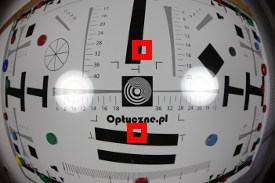
|
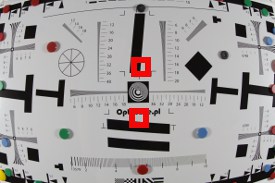
|
Let’s check how the lens performs in the frame centre when it comes to RAW files from the EOS 50D. We would like to remind here that in the case of that detector the decency level is set near 34 lpmm and the best fixed-focal lenses can reach results as high as 51-53 lpmm.
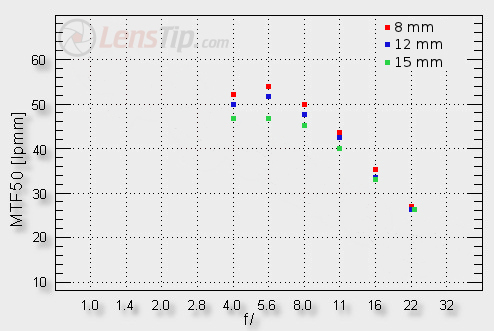
The performance you can see on the graph can be only described by one word: revelation. At shorter focal lengths the lens, even wide open, reaches a level of 50 lpmm or higher and by f/5.6 it gets to a record-breaking values of 53-54 lpmm. At 15 mm it fares a bit worse but only if you compare it to splendid results at the shorter end. On the absolute scale the results on the level of 47 lpmm, which we got even at the maximum relative aperture, are still very good after all. The performance in the frame centre is simply beyond reproach.
Let’s check how the lens fares on the edge of the frame. We should add that, in reality, it is the edge of the APS-C frame but to tell you the truth the image from the area further away from the centre is so distorted that the measurement fields for the APS-C and full frame are situated close to each other on the full frame sensor.
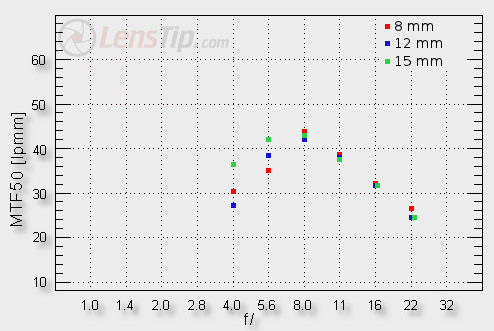
Here you can have some slight reservations when it comes to the performance at the maximum relative aperture. On slight stopping down the lens exceeds the decency level, set near 34-35 lpmm. In actual fact the situation is even better in real life photos because when you use a fisheye lens you rarely take pictures from the distance of 15-20 cm with a good resolution on the edge of the frame in mind. When the photographed object is positioned further away and when we care more about a nice landscape frame, the influence of the depth of field and field curvature is marginalized and the edges, even by f/4.0 and on full frame, still look decent or even good.
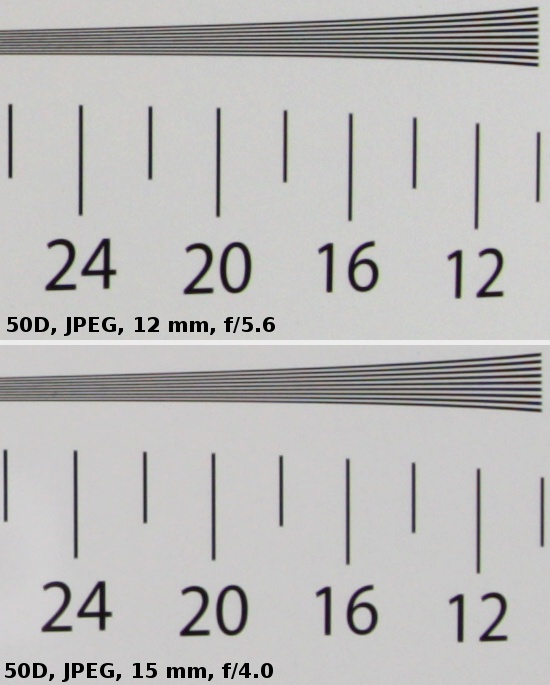 |






